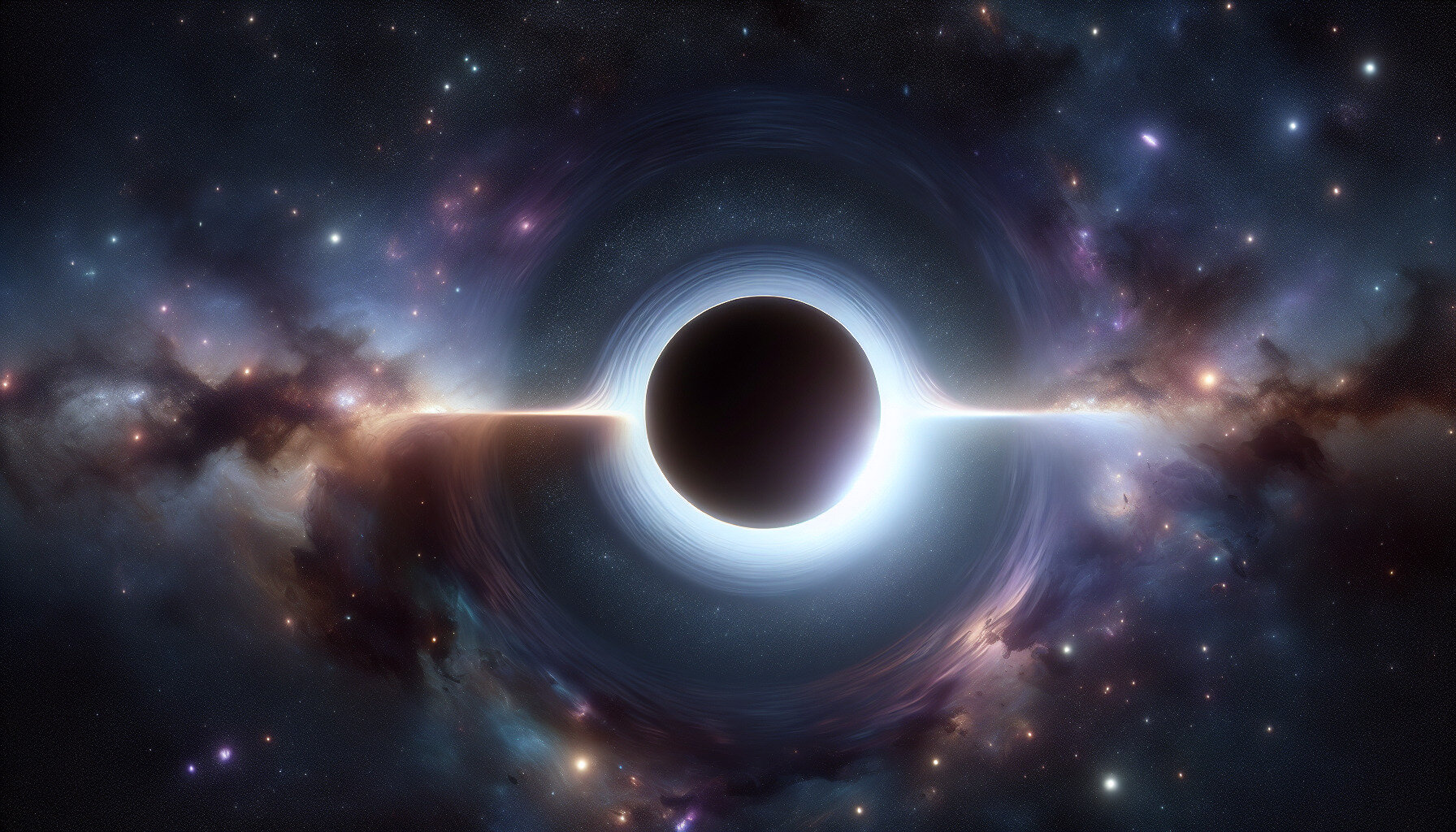Credit: AI-generated image
A physicist who studies black holes has discovered that in an expanding universe, Einstein’s equations require that the rate of expansion of the universe at the event horizon of each black hole must be constant, and the same for all black holes. This in turn means that the only energy on the event horizon is dark energy, the so-called cosmological constant. The research has been published on the arXiv preprint server.
“Otherwise,” said Nikodem Popławski, a distinguished lecturer at the University of New Haven, “the pressure of matter and the curvature of spacetime at a horizon would have to be infinite, but that is unphysical.”
Black holes are a fascinating subject because they are about the simplest things in the universe: their only properties are mass, electric charge and angular momentum (spin). Yet their simplicity leads to a fantastic property: they have an event horizon at a critical distance from the black hole, a non-physical surface around it, in the simplest cases spherical. Anything closer to the black hole, that is, within the event horizon, can never escape the black hole.
Black holes were predicted in 1916 by Karl Schwarzschild while serving as a German soldier on the Russian front, suffering from the painful autoimmune disease pemphigus.
Using Einstein’s general relativity equations, he assumed a massive, non-rotating, perfectly round object in an otherwise empty and unchanging universe and discovered the event horizon. The radius of the event horizon is proportional to the mass of a black hole. Within the horizon, even light, the fastest object in the universe, cannot escape the hole.
Schwarzschild also discovered an apparent singularity at the center of the black hole, a place of infinite density where Einstein’s laws of gravity apparently don’t work.
Astronomers have since discovered that most galaxies appear to have a supermassive black hole at their center; for the Milky Way, it’s Sagittarius A*, with a mass more than four million times that of the Sun. Only in 2019 was a black hole directly imaged, a dark blob surrounded by a halo of light, located at the center of the galaxy Messier 87, 55 million light-years from Earth.
Going further than Schwarzschild, Popławski assumed a huge, centrally symmetrical object in an expanding universe. In this case, the solution to Einstein’s equations for the structure of spacetime around the mass was first obtained in 1933 by the British mathematician and cosmologist George McVittie.
McVittie discovered that spacetime near the mass is similar to Schwarzschild’s, with an event horizon, but far from the mass the universe is expanding as our universe is today. The Hubble parameter, also called the Hubble constant, specifies the expansion rate of the universe.
Popławski used McVittie’s solution to discover that the rate of expansion of space at the event horizon must be a constant, related only to the cosmological constant (which can be interpreted as the energy density of the vacuum of spacetime). Today we know this as the density of dark energy. That is, the only energy at the horizon is dark energy. The result, he said, is that different parts of the universe are expanding at different rates.
In fact, something similar has been found with the so-called “Hubble strain”, a statistically significant discrepancy between two different measured values of the Hubble parameter, depending on whether “late universe” measurements are used or “early universe” techniques based on measurements of the cosmic microwave background. In his work, Popławski said that this discrepancy is “a natural consequence of a correct analysis of the spacetime of a black hole in an expanding universe within Einstein’s general theory of relativity.”
Moreover, his equations show that one consequence of the universe expanding at different rates is that the cosmological constant – and therefore the value of dark energy – must be positive. Otherwise, Popławski said, a closed universe without that constant would be oscillating and unable to create cosmic voids.
“It is the simplest explanation for the observed current acceleration of the universe.”
For example, for a star, the universe is also expanding at the surface boundary, but the body is not expanding because it is gravitationally and electromagnetically bound.
However, an event horizon is a mathematically abstract thing, not something made of matter or energy, but simply made of points in space, so a constant expansion rate of space there is not surprising. The event horizon itself (and therefore a black hole) does not expand; points in space beyond the horizon move away from it.
Real black holes rotate, but if the rotation is generally slow, Popławski’s conclusions should apply to them to a good approximation. But measuring the Hubble parameter at an event horizon is currently impossible unless new techniques are developed.
An observer at the event horizon could in principle measure the Hubble parameter there, but would forever be unable to convey its value to the rest of the universe, since it falls beyond the event horizon, and information about it cannot possibly be acquired sent back.
This, Popławski said, fits in with a hypothesis he published in 2010: that every black hole is actually a wormhole (an Einstein-Rosen bridge) to a new universe on the other side of its event horizon.
“The event horizon is a doorway from one universe to another,” he said. “This doorway does not grow with the expansion of the universe… If this happens for the event horizon of the black hole that forms a universe, it should also work for the event horizon of other black holes in that universe.”
More information:
Nikodem Popławski, Black holes in the expanding universe, arXiv (2024). DOI: 10.48550/arxiv.2405.16673
Magazine information:
arXiv
© 2024 Science X Network
Quote: The Surprising Behavior of Black Holes in an Expanding Universe (2024, June 26) retrieved June 26, 2024 from https://phys.org/news/2024-06-behavior-black-holes-universe.html
This document is protected by copyright. Except for fair dealing for the purpose of private study or research, no part may be reproduced without written permission. The contents are provided for information purposes only.
